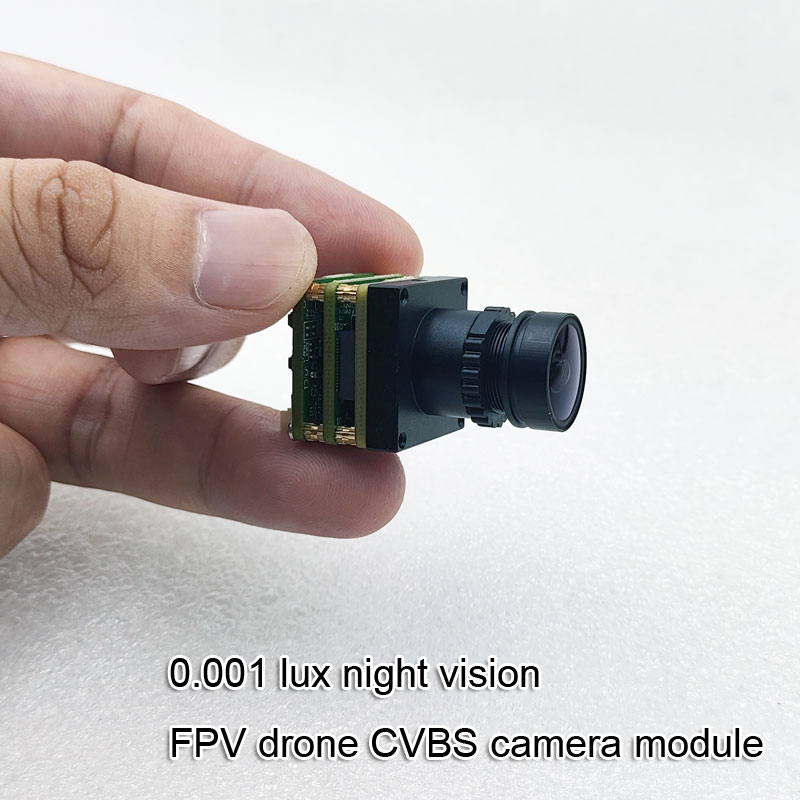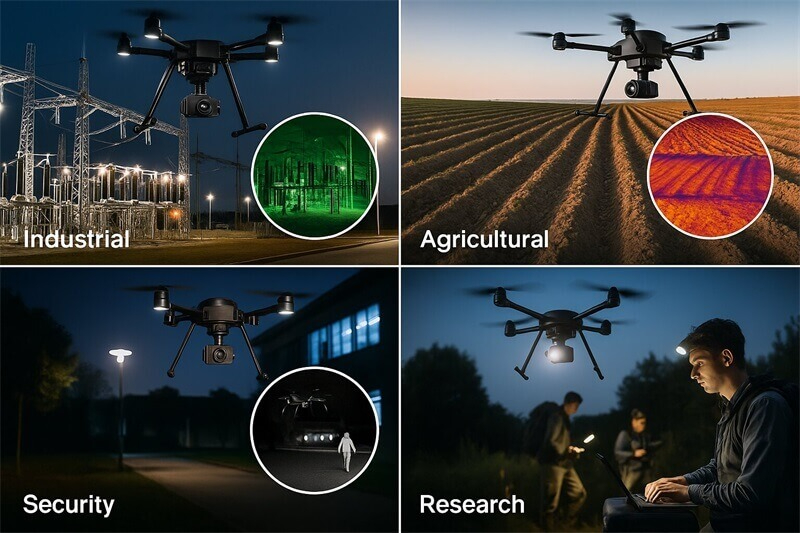Night Vision Camera Modules for UAVs: Cutting Through the Darkness - What Truly Matters?
Unmanned Aerial Vehicles (UAVs) have revolutionized countless industries, from search and rescue and infrastructure inspection to agriculture and security. But when the sun sets, standard cameras falter, rendering drones nearly blind. This is where specialized Night Vision (NV) camera modules become mission-critical. Choosing the right one isn't just about seeing in the dark; it's about seeing effectively for your specific application. So, what factors matter most when selecting a night vision camera module for your UAV?
Beyond Just "Seeing": The Core Challenges
Night vision for UAVs presents unique challenges:
- Limited Size & Weight: Drones have strict payload constraints.
- Power Consumption: Every watt counts for flight time.
- Environmental Factors: Vibration, temperature extremes, moisture.
- Real-time Performance: Lag or low frame rates hinder control and observation.
- Integration: Seamless compatibility with flight controllers and gimbals.

Cutting Through the Noise: What Matters Most
- Sensor Technology & Sensitivity: The Heart of Night Vision
- Low-Light Sensitivity: Measured in lux (e.g., 0.001 lux or lower). This defines the minimum light level at which the sensor can produce a usable image. Look for sensors employing backside illumination (BSI) technology and large pixel sizes (e.g., 3µm+), like Sony's STARVIS or STARVIS 2 series, known for exceptional low-light performance.
- Sensor Size: Larger sensors (e.g., 1/1.8", 1/1.2") generally capture more light than smaller ones (e.g., 1/2.8"), leading to better low-light image quality and reduced noise.
- Resolution: Balance is key. Higher resolution (1080p, 4K) provides detail but demands more processing power and light. Lower resolution (720p) sensors can be more sensitive in ultra-low-light conditions. Consider your operational range and detail requirements.
- Lens Aperture (f-number): Letting the Light In
- A lower f-number (e.g., f/1.2, f/1.4) means a larger lens aperture, allowing significantly more light to reach the sensor. This is arguably as critical as sensor sensitivity for true low-light performance. A fast lens paired with a sensitive sensor is the golden combination.
- Image Processing & Noise Reduction: Seeing Clearly in the Murk
- Advanced ISP (Image Signal Processor): This chip handles noise reduction, detail enhancement, contrast adjustment, and dynamic range optimization in real-time. Look for modules with sophisticated 2D/3D noise reduction algorithms that preserve detail while minimizing grain.
- Wide Dynamic Range (WDR): Essential for scenes with both very dark and very bright areas (e.g., a dark field with a bright security light). True WDR (not just digital compensation) prevents blown-out highlights and crushed shadows.
- Stabilization: Keeping the Picture Steady
- UAVs vibrate and move constantly. Image stabilization is non-negotiable for usable night footage. Options include:
- Mechanical Gimbal Stabilization: The gold standard, physically stabilizing the entire camera module. Requires integration space and power but offers the best results.
- Electronic Image Stabilization (EIS): Software-based cropping and adjustment. Less effective in very low light where image noise can be misinterpreted as motion, but lighter and simpler.
- Vibration Dampening: Built-in dampening within the module itself helps counter high-frequency motor/propeller vibrations that gimbals might not fully eliminate.
- Form Factor, Weight, and Power: The UAV Constraints
- Size & Weight: Must fit within the drone's payload capacity and physical mounting points without significantly impacting flight characteristics or battery life.
- Power Consumption: Measured in Watts (W). Lower power consumption directly translates to longer flight times. Look for modules optimized for efficiency.
- Cooling: Some high-performance sensors or processors generate heat. Effective passive or low-power active cooling is necessary to prevent thermal noise and ensure reliability.
- Connectivity & Integration: Talking to the Drone
- Output Interface: Common standards include MIPI CSI-2 (for direct connection to companion computers/autopilots), USB3, HDMI, or analog (CVBS/HD-SDI). Ensure compatibility with your drone's flight controller or video transmission system.
- Control Protocol: How will you control settings (gain, shutter, WDR, etc.)? Look for support for standard protocols like UART (serial), USB CDC, or network protocols (e.g., ONVIF, RTSP) if IP-based.
- Durability & Environmental Sealing:
- UAVs operate in diverse conditions. Modules should be robustly built to handle vibration, shock, moisture, dust, and temperature variations (-20°C to 60°C is common).

Thermal vs. Low-Light (Starlight) Cameras: A Crucial Distinction
- Low-Light (Starlight) Cameras: Amplify available visible and near-infrared (NIR) light. They produce grayscale or color images (depending on sensor) but require some ambient light (moonlight, starlight, urban glow). They excel at providing recognizable detail where light exists.
- Thermal Cameras: Detect heat signatures (infrared radiation) emitted by objects. They work in total darkness, through smoke, fog, and light foliage. They show temperature differences but lack fine detail for recognition. Key Takeaway: Starlight cameras are for identification in low light; Thermal cameras are for detection in complete darkness or obscurants. Often, UAVs use them together.
Key Takeaways for UAV Operators:
- Prioritize Sensor & Lens: Don't just chase megapixels. A sensitive sensor (BSI, large pixels) paired with a fast lens (low f-number) is fundamental.
- Stabilization is Mandatory: Shaky night footage is useless. Invest in good gimbal integration or highly effective EIS.
- Balance Performance & Payload: The best module is useless if it cripples your drone's flight time or handling. Optimize for weight and power.
- Define Your "Dark": Understand the lowest light levels you need to operate in. Pure starlight requires different specs than moonlit urban areas.
- Consider Thermal Complementation: For critical detection in zero-light or obscured conditions, thermal might be necessary alongside or instead of low-light.
- Test in Real Conditions: Spec sheets don't tell the whole story. Test modules in environments mimicking your actual operational scenarios.
Conclusion
Choosing the right night vision camera module for your UAV is a strategic decision impacting mission success and safety. By focusing on the core pillars of sensor/lens sensitivity, advanced processing, robust stabilization, and seamless integration within UAV constraints, you can cut through the darkness effectively. Understand your operational requirements, prioritize the factors that matter most for your application, and ensure your drone sees clearly, no matter the hour. The night is no longer a barrier, but an operational domain waiting to be explored.


